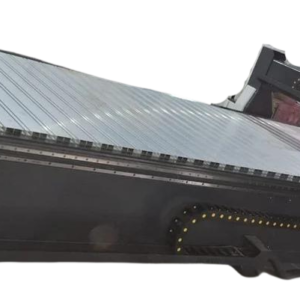Overview:
- Type: CNC Wood Carving Machine
- Primary Use: Carving, engraving, and cutting wood and wood-based materials.
Key Features:
- Cutting Area:
- The working area varies by model but typically ranges from small desktop sizes (e.g., 300 x 300 mm) to large industrial sizes (e.g., 2000 x 3000 mm). The size determines the maximum dimensions of the materials and projects the machine can handle.
- Spindle Power:
- The spindle power, usually between 1.5 kW to 5.5 kW or more, provides the necessary force for carving detailed designs and cutting through various types of wood. Higher spindle power allows for more aggressive cutting and the ability to handle denser materials.
- Precision and Accuracy:
- High-quality linear guides, ball screws, and stepper or servo motors ensure precise movement and cutting. Accuracy is crucial for detailed carvings and maintaining the integrity of intricate designs.
- Controller:
- The machine is operated via a CNC (Computer Numerical Control) system, which allows for the automation of carving tasks based on computer-aided design (CAD) files. Advanced controllers may feature touchscreens and user-friendly interfaces for ease of use.
- Software Compatibility:
- Typically compatible with a range of CAD/CAM software, enabling users to create and import designs, generate tool paths, and control the machine with high precision.
- Frame and Build:
- Constructed from robust materials like steel or aluminum to ensure stability and reduce vibrations. A stable frame is essential for maintaining accuracy during operation.
- Tooling:
- The machine can be equipped with various carving bits and tools depending on the specific requirements of the project. This includes straight bits, V-bits, ball end mills, and more, allowing for diverse carving and engraving options.
- Automation Features:
- Many CNC wood carving machines include features like automatic tool changers, which allow the machine to switch between different tools without manual intervention. Some models also come with integrated dust collection systems to keep the work area clean.
- Safety Features:
- Safety mechanisms such as emergency stop buttons, protective enclosures, and safety interlocks are commonly included to ensure safe operation.
Applications:
- Decorative Carving: Creating intricate patterns, designs, and textures on wooden surfaces.
- Furniture Making: Carving detailed designs and elements for furniture pieces.
- Sign Making: Engraving custom signage and logos.
- Architectural Details: Crafting detailed architectural elements and moldings.
- Artistic Projects: Producing artistic and decorative wood pieces for various applications.
Benefits:
- Precision: Delivers high-accuracy carvings and cuts, essential for detailed and intricate designs.
- Efficiency: Automates repetitive carving tasks, increasing productivity and reducing manual labor.
- Versatility: Capable of handling a wide range of carving and cutting tasks, making it suitable for diverse woodworking applications.







Reviews
There are no reviews yet.